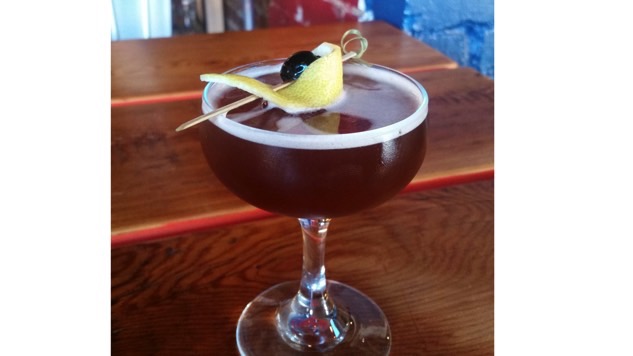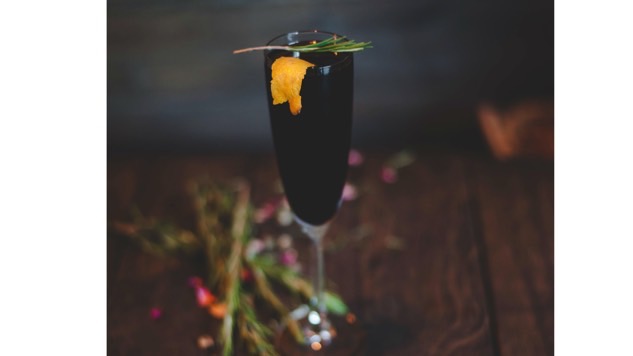
Thirsty? You’re in luck. In Paste’s drinking-and-traveling series, City in a Glass, we mix up a city’s signature swills and slide them down the bar to readers. Grab a stool. This round, in Pittsburgh, is on us.
Pittsburgh has about 12 bars for every 10,000 residents—more bars per capita than any other city in the country. That makes sense for a region with such a stubborn drinking culture (this is where the Whiskey Rebellion broke out in 1791) and a prosperous industrial history, which drew thirsty workers to Pennsylvania for hundreds of years. And while Steel City has seen its share of booms and busts, its boozing spirit has been reawakened over the past few years.
“This is a really exciting time to be in Pittsburgh,” local barman Lou DiDonato says. “You hear about people opening something cool left and right.” There are now rum distilleries, cider breweries and even kombucha bars. And last month the state passed an industry-friendly liquor reform law that allows any Pennsylvania-licensed distillery to sell any Pennsylvania-licensed beer or wine on-site, and vice versa. That means local breweries, wineries and distilleries can now sell their own product and everyone else’s, which creates a collegiate and collaborative atmosphere among alcohol producers.
Timothy Garso, bar manager at Smallman Galley, says that while the city has changed drastically over the past decade—check out the revitalization of downtown’s cultural district—it will always have a “down-home hospitality.” According to this Pittsburgh native, one of the things that makes the city so welcoming is the fact that people can afford to open businesses like bars here that they can’t in other places. “Pittsburgh has a low cost of entry,” he says. “People who are very talented, but more importantly really excited by what they’re doing, realize how lucky they are that they can open here. This makes them really passionate.”
And with less financial pressure comes more opportunities to take creative risks. On this city drinks tour, we’re going to introduce you to three creative Pittsburgh cocktails, show you where to find them and even how to replicate them at home.
![]()
1. Get Off My Lawn
Where to order: Butterjoint

Photo courtesy of Butterjoint
One misconception about restaurants and bars is that if they serve strawberries in the winter or oranges in the summer, they aren’t using seasonal ingredients. When in fact, many of these establishments are actually using preservation methods like canning and fermenting to keep fresh produce available all year round. Butterjoint bar, in Oakland, is one of those establishments. The sister bar to the restaurant Legume, Butterjoint’s menu is influenced by what’s coming through the restaurant’s back door.
“We’re pretty much encouraged to go back in the kitchen whenever we want, ask questions and taste things,” bar manager Amanda Schaffner says. “Right now they’re processing a lot of tomatoes, so we’re working on a cocktail made with tomato water.” She’s also working on a homemade crème de mûre, or blackberry liqueur, made from local blackberries that were a little too tart to eat as-is. “We make a lot of shrubs and infusions in the summer that we’ll bring back out in the winter when fruit isn’t around here anymore.”
One of Butterjoint’s infusions, however, stands out for how…unnatural it is. The Get Off My Lawn cocktail is made with local cold brew coffee and Werther’s Original-infused bourbon. Yes, Werther’s Original as in the hard candies your grandpa used to eat while instructing a dog to get off his lawn. “Our cocktails rotate all the time, but we definitely have some fan favorites,” Schaffner says. “This one is very popular.”
Get Off My Lawn
1½ oz. Werther’s Original hard candy-infused Old Grand-Dad bonded bourbon (recipe below)
1½ oz. cold brew coffee made from beans such as Commonplace Coffee Company’s Waykan Guatemala
Make infusion: Combine one bottle of Old Grand-Dad bourbon and 88 pieces of Werther’s Original hard candies in a sealable container. Shake once an hour until all of the candies are dissolved.
Make drink: Combine ingredients in a glass filled with ice. Stir.
![]()
2. The PiXburgh Kid
Where to order: Smallman Galley

Photo courtesy of Smallman Galley
Pittsburgh doesn’t currently have one of the big food halls or Chelsea Market clones that are popping up in cities across the country. But it does have Smallman Galley, a 6,000-square-foot restaurant incubator in the Strip District. Here, four aspiring chef-restaurateurs run four independent kitchens, side-by-side, for 18 months. One day a week the 200-seat dining hall shuts down and the chef-restaurateurs attend training sessions to learn the ins and outs of opening restaurants and running their own businesses. After 18 months, their kitchen concepts should be refined enough and they should have a big enough cult following to set out on their own. Then four more aspiring restaurateurs can move in.
Smallman Galley has a bar, too, but unlike the restaurant concepts, the bar isn’t going anywhere. Instead, every few months, bar manager Timothy Garso switches up the menu’s very specific theme. For example the cocktails on Smallman Galley’s opening menu were based on 1990s’ hip-hop albums. The current menu is dedicated to the Pittsburgh Pirates. Drinks are inspired by players and baseball games and include ingredients such as corn chip-infused mezcal.
Garso’s favorite drink is The PiXburgh Kid, which is named for former Pirates player and Pittsburgh native Neil Walker. (Walker now plays for the New York Mets.) The drink is made from equal parts PX sherry and Stonewall rum, which is distilled in Pennsylvania from local molasses, plus lemon juice, white vermouth and bitters. Garso says it’s a great cocktail for sipping as the weather breaks in early fall. And his baseball-themed menu will be available into early fall; that is, unless the Pirates rally and make the playoffs.
The PiXburgh Kid
1 oz. Stonewall American rum
1 oz. Lustau Pedro Ximénez VORS sherry
¾ oz. Atxa Vino white vermouth
½ oz. lemon juice
3 dashes Angostura bitters
Combine all ingredients plus ice in a cocktail shaker. Shake. Double strain into a chilled coupe glass. Garnish with a Luxardo cherry and a lemon twist.
![]()
3. Italian 75
Where to order: Grapperia

Photo courtesy of Palermo Photo
Grappa is an Italian brandy that’s distilled from winemaking byproduct, the grape pulps, skins and seeds known as pomace. Italians like to drink this raisin-y spirit after dinner and many old-school Italian restaurants in the U.S. keep a bottle or two under their counters. Grapperia, in Pittsburgh’s booming Lawrenceville neighborhood, is one of the few grappa-focused bars in the country.
“It’s such an odd spirit to have as your focal point,” says general manager and head mixologist Lou DiDonato. “People are a little nervous to mess with it. Grappa has a lot of flavor, but it’s flavors that a lot of people aren’t used to.” Grapperia stocks dozens of varieties of grappa for people to sample, plus lots of the Italian herbal liqueur amaro—pretty much every bottle that’s available in Pennsylvania. The bar even produces its own grappa, Grappa Fatto A Mano, which is a collaboration between it and Pittsburgh’s Wigle whiskey company. “The Grapperia does digestion very well,” DiDonato says, laughing. “We have all of your before dinner and after dinner drinking needs.”
DiDonato’s cocktail menu also features drinks made with grappa. “Grappa is kind of like tofu: It takes on the taste of whatever you put in it,” he says. “Sometimes you don’t know what you’re going to get when you make a cocktail out of it.” One of the bar’s fun, original concoctions is the Italian 75, a super Italian take on the French 75. The traditional French 75 calls for gin, simple syrup, lemon juice and Champagne. The Grapperia’s version is made with grappa, rosemary simple syrup, balsamic vinegar and bubbly Prosecco.
Italian 75
1½ oz. Grappa Bianco (white)
½ oz. rosemary simple syrup (recipe below)
½ oz. balsamic vinegar
Prosecco
Make rosemary simple syrup: Combine 1 cup water and 1 cup sugar in a saucepan. Heat slowly, stirring until sugar dissolves. Remove from heat and steep a large bunch of fresh rosemary in the syrup until it cools completely. Strain.
Make drink: Combine grappa, simple syrup, vinegar and ice in a mixing glass. Stir. Strain into a Champagne flute. Top with Prosecco and an expressed lemon peel.
Top image: Always Shooting, CC-BY
City in a Glass columnist Alyson Sheppard writes about travel and bars for Paste and Playboy. She currently resides in the great state of Texas.